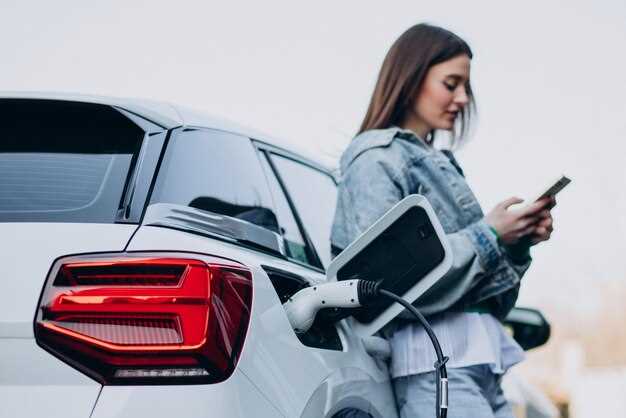How to Extend the Lifespan of Your Hybrid Car

Hybrid cars are becoming increasingly popular due to their fuel efficiency and environmentally friendly features. However, like any vehicle, they require proper maintenance and care to ensure they last as long as possible. Understanding how to maximize the lifespan of your hybrid car is essential not only for saving money but also for contributing to a sustainable future.
Regular maintenance is pivotal in promoting longevity. This includes routine checks on components unique to hybrid vehicles, such as the battery and electrical systems. Additionally, it’s crucial to stay informed about the specific maintenance needs of your hybrid model, as different manufacturers may have varying requirements.
Driving habits also play a significant role in the lifespan of your hybrid car. Adopting smoother driving techniques, minimizing rapid acceleration and hard braking, can greatly extend the life of both the battery and other mechanical parts. By being mindful of how you drive and maintaining a consistent routine, you can ensure that your hybrid car remains in optimal condition for years to come.
Regular Maintenance Checks to Prevent Wear and Tear
Regular maintenance checks are essential for extending the lifespan of your hybrid car. By staying proactive with maintenance, you can prevent minor issues from escalating into major repairs. Here are key areas to focus on:
-
Battery Maintenance:
Hybrid vehicles rely heavily on their battery systems. Regular checks should include:
- Assessing the battery charge level.
- Inspecting for corrosion on terminals.
- Ensuring cooling fans are functioning properly.
-
Fluid Levels:
Maintaining proper fluid levels is crucial for engine and transmission performance. Regularly check:
- Engine oil and coolant levels.
- Brake fluid and power steering fluid.
- Transmission fluid for signs of contamination.
-
Tire Maintenance:
Tires affect traction, fuel efficiency, and overall safety. Regular checks should include:
- Monitoring tire pressure monthly.
- Rotating tires every 5,000 to 7,500 miles.
- Inspecting for uneven wear or damage.
-
Brake System Inspection:
The brake system is critical for safety. Regular inspection involves:
- Checking brake pads for wear.
- Inspecting rotors for scoring or damage.
- Testing the brake fluid for moisture content.
-
Regular Software Updates:
Hybrid vehicles often have sophisticated software controlling various systems. Updates can ensure optimal performance:
- Check for manufacturer software updates periodically.
- Addressing any error codes displayed on the dashboard.
Implementing these regular maintenance checks will not only help you detect potential issues early but also enhance the durability and reliability of your hybrid car. Schedule maintenance visits based on your owner’s manual recommendations to keep everything in optimal condition.
Choosing the Right Driving Habits for Longevity

Adopting the right driving habits can significantly extend the lifespan of your hybrid car. By being mindful of how you drive and maintain your vehicle, you can enhance its durability and overall performance. Here are some key driving habits to consider:
| Driving Habit | Description | Benefits |
|---|---|---|
| Gentle Acceleration | Accelerate smoothly without sudden bursts of power. | Reduces stress on the engine and hybrid system, leading to lower wear and tear. |
| Maintaining Steady Speed | Avoid frequent stops and starts by maintaining a consistent speed. | Improves fuel efficiency and reduces strain on the battery and drivetrain. |
| Proper Use of Regenerative Braking | Utilize regenerative braking instead of conventional brakes when possible. | Extends the life of the brake pads and enhances battery recharge efficiency. |
| Adhering to Speed Limits | Follow posted speed limits and avoid excessive speeding. | Promotes better fuel economy and reduces engine stress. |
| Avoiding Idle Time | Turn off the engine instead of idling for long periods. | Conserves fuel and minimizes unnecessary wear on the engine. |
By implementing these driving habits, you can maximize the efficiency of your hybrid car and contribute to its long-lasting performance. Consistent attention to how you drive not only aids in reducing operational costs but also helps in maintaining the vehicle’s health over time.
Utilizing Engine Technology for Better Performance
Hybrid cars combine internal combustion engines with electric propulsion, allowing for improved efficiency and performance. To maximize the benefits of this technology, consider the following strategies:
-
Regular Software Updates:
Engine performance can be optimized through regular software updates from the manufacturer. These updates refine power management systems and improve fuel efficiency. Ensure that your hybrid car’s software is always up to date.
-
Efficient Use of Regenerative Braking:
Utilizing regenerative braking effectively can enhance performance. This system recovers energy during braking and uses it to recharge the battery, thus improving fuel efficiency. Engage this feature during stop-and-go driving to maximize energy recovery.
-
Optimize Driving Habits:
Your driving style significantly impacts engine performance. To enhance efficiency:
- Avoid rapid accelerations and harsh braking.
- Maintain a steady speed whenever possible.
- Utilize cruise control on the highway.
-
Regular Maintenance Checks:
Regular maintenance ensures that the engine and hybrid systems are functioning optimally. Focus on:
- Replacing air filters and spark plugs as needed.
- Checking battery health regularly.
- Inspecting and maintaining the cooling system to prevent overheating.
-
Use Quality Fuel:
High-quality fuel can greatly affect engine performance. Opt for fuel that meets or exceeds the manufacturer’s specifications to ensure optimal combustion efficiency and engine longevity.
-
Optimize Tire Pressure:
Tire pressure influences fuel efficiency. Ensure tires are inflated to the recommended levels for better handling and reduced rolling resistance.
By effectively leveraging engine technology and adhering to best practices, you can significantly enhance the performance and lifespan of your hybrid vehicle.
Investing in Quality Replacement Parts When Necessary
When it comes to maintaining your hybrid vehicle, the quality of replacement parts plays a crucial role in longevity and performance. While it may be tempting to opt for cheaper alternatives, investing in high-quality components is essential for several reasons.
Firstly, quality parts ensure compatibility with your hybrid system. Hybrid vehicles have complex electrical systems and specialized components that require precise specifications. Using inferior parts can lead to improper functioning, resulting in reduced fuel efficiency and potential damage to other systems.
Secondly, high-quality replacement parts often come with better warranties. This added assurance not only protects your investment but also reflects the manufacturer’s confidence in their product. A longer warranty period can save you money in the long run, as you are less likely to face additional repair costs shortly after installation.
Furthermore, premium parts are typically made from more durable materials, which can withstand the rigors of daily driving. Enhanced durability translates to a longer lifespan, reducing the frequency of replacements and the associated maintenance costs. This is particularly important for hybrid vehicles, where the integration of both electric and gasoline systems demands reliable performance from all components.
Moreover, using quality parts can contribute to the overall safety of your vehicle. Key components such as brake pads, batteries, and control modules are critical for the performance and safety of a hybrid car. Compromising on these parts can lead to serious accidents or breakdowns, making safety a top priority.
Lastly, investing in quality replacement parts supports the automotive industry by encouraging manufacturers to produce better products. This can lead to innovation and improvements in hybrid technology, ultimately benefiting all consumers.
In conclusion, while the initial investment in high-quality replacement parts may be higher, the long-term benefits far outweigh the costs. Enhanced performance, extended lifespan, and improved safety are critical factors that make this investment worthwhile for the maintenance of your hybrid car.
Understanding Battery Management for Hybrid Systems
Effective battery management is crucial for extending the lifespan of hybrid vehicles. The hybrid system typically combines an internal combustion engine with an electric motor, relying heavily on a rechargeable battery pack for optimal performance. Understanding how to manage this battery effectively can lead to improved efficiency and longevity.
One of the primary components of battery management is ensuring proper charging routines. Hybrid batteries are designed to undergo regular charge and discharge cycles. It’s important to avoid draining the battery completely, as this can significantly reduce its lifespan. Instead, aim to maintain the battery charge between 20% to 80% for optimal health.
Temperature control also plays an essential role in battery management. Hybrid batteries perform best in moderate temperatures and can be adversely affected by extreme heat or cold. Parking in shaded areas during hot weather and utilizing garage space in colder months can mitigate temperature-related degradation. Additionally, some hybrid systems come equipped with built-in thermal management systems to regulate battery temperature efficiently.
Monitoring battery health is another critical aspect of management. Many modern hybrids provide diagnostic tools that allow owners to monitor battery status and performance. Regular checks can help detect any anomalies early, allowing for timely maintenance. Understanding how to interpret these diagnostics can be invaluable for proactive upkeep.
Lastly, adhering to manufacturer guidelines for battery maintenance and service is essential. This includes following recommended service intervals and using quality replacement parts. By prioritizing these factors, hybrid vehicle owners can significantly enhance battery lifespan, ultimately leading to a more reliable and efficient driving experience.
Environmental Factors That Impact Your Hybrid’s Lifespan
Several environmental factors can significantly affect the lifespan of your hybrid car. Understanding these factors allows you to take proactive measures to prolong its longevity.
One primary factor is climate. Extreme temperatures, whether hot or cold, can have adverse effects on battery performance. In high temperatures, the risk of overheating increases, potentially leading to reduced battery life. Conversely, cold weather can affect the battery’s ability to hold a charge, diminishing fuel efficiency. Parking your hybrid in a garage or shaded area can help mitigate these effects.
Air quality is another crucial aspect. Poor air quality, characterized by high levels of pollutants and particulate matter, can lead to greater wear on the engine and other components. Regularly cleaning the air intake system and using high-quality fuel can help protect your hybrid from these detrimental effects.
Exposure to corrosive materials is also a concern. Road salt, especially used in colder climates, can lead to rust and corrosion on metal parts of the vehicle. Frequently washing the underside of your hybrid, particularly during winter months, helps reduce this risk. Additionally, consider applying a protective coating to vulnerable areas to safeguard against environmental damage.
Driving conditions like rough roads and heavy traffic can lead to increased wear and tear on your hybrid. Encountering potholes, gravel, or unpaved roads can affect suspension components and overall vehicle alignment. To minimize damage, try to choose smoother routes and avoid aggressive driving in congested areas.
Lastly, humidity levels can impact your hybrid’s longevity. High humidity can contribute to sensor malfunction and increase the risk of electrical issues. Keeping the interior and exterior of your car dry and using moisture-absorbing products can help counteract these effects.
By being aware of these environmental factors and taking appropriate measures, you can extend the lifespan of your hybrid vehicle and maintain its efficiency over time.

